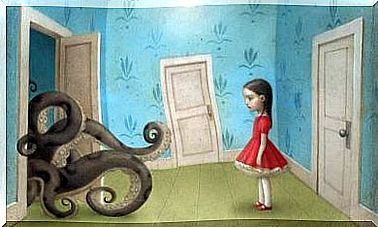Stan Tatkin’s Couple Bubble For A Stable Relationship

Stan Tatkin is a clinician who developed the Psychobiological Approach to Couples Therapy (PACT). For years he has focused on studying people in their relationships and the way they are built. This is how the concept of the couple’s bubble arose.
In this article we explain what exactly is meant by this so-called couple bubble . At this point we can already provide some information: In general, the couple bubble refers to the agreements that people have made in some form within a relationship – be it explicitly or implicitly. This can concern loyalty, for example.
The principles of the couple’s bladder
The book “Wired for Love”, which he wrote, serves to go into the concept of the couple bubble, as conveyed by Tatkin. In this, the concept is dealt with in detail. Tatkin describes the principles that, according to him, should be present in a couple’s bubble.
What he makes clear from the start is that both members in a relationship have to work on the couple bubble. He also explains that serious problems can arise in a relationship when people are at different levels.
In other words, a party cannot always give without getting something in return. In these circumstances, which exist more frequently than expected, the bubble burst is certain.

1. “You first!” Does not work
One of Tatkin’s first principles is that it is not feasible to let your partner take the first step in order to be able to react. The construction of the bladder begins with doing your best yourself. This guarantees the safety, well-being and joy of the person who shares these emotional states with us.
In addition, with unconditional giving, which is always based on our own values, there is the possibility to see how the other person behaves. Does it destroy the bubble? Is it doing its part to keep the bladder going?
2. Find security in the partner
This is another principle that Tatkin mentions in his book. According to this principle, there should be fluent communication in order to know how to offer the other person the security they need in the relationship. Fears and other previous experiences that influence future relationships play a role here.
For example, if the partner has experienced infidelity frequently, he or she may need certain indications that the current relationship will not be infidelity again. What is necessary to maintain this feeling of security must be agreed with the other person.
3. Do not burst the couple’s bubble
According to the third principle, it is important to prevent the couple’s bubble from bursting. This can be achieved by conveying to the other person that it is important. Time should also be devoted to this and security should be provided in order to build trust.
If in a relationship accusations such as “You ignore me!”, “You only spend time with your friends!” Or “You have changed!” Are raised, one should be alarmed. The couple bubble is about to burst and requires a decision to be made: to allow this to happen or to analyze what is going wrong.

4. Protect the couple’s bladder
Protecting the couple’s bladder is the ultimate principle. However, this does not mean that the couple should become dependent on one another, as Tatkin explains in his book. On the contrary, a healthy relationship with a stable couple bubble represents closeness and independence in equal measure.
The couple bubble is a place where both parties feel safe and secure. They know that they can count on each other because they both give and receive something in return. The partner has top priority and is there in difficult times. They are also both working on effective communication in which each other is listened to.
If a couple’s bubble develops, it does not mean that both people lock themselves in and no longer maintain their relationships with other people. In fact, they create a protective place to grow that allows both independence and closeness. If this bubble is destroyed, the relationship is no longer stable.









